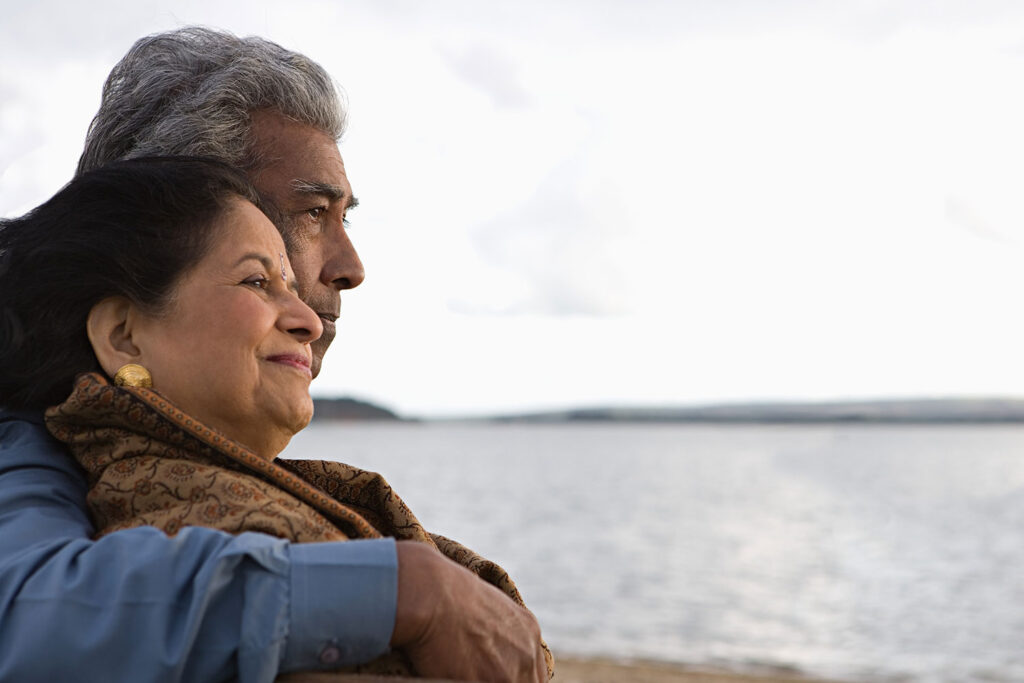Conditions we address
Working side by side with investors, research partners and industry leaders globally, our team of scientists are dedicated to creating and delivering solutions to improve the health of people across the globe.
Through our understanding of the central role of DNA damage repair in ageing, our research programme is producing first-in-class technologies to improve outcomes for age-related diseases including:
Osteoporosis
Osteoporosis (“porous bone”) is a disease that affects the skeleton and leads to thinning of bone and a high risk of fragility fractures. Fragility fractures occur in settings where a fracture would not usually occur, with low-level or low-energy trauma, such as a fall from standing height or less.
According to the International Osteoporosis Foundation, osteoporosis affects one in three women and one in five men over the age of 50 worldwide; an estimated 200 million women worldwide are affected by osteoporosis. As the risk of osteoporosis increases with age, the number of people affected by osteoporosis and, as a result, fractures is expected to increase as the global population ages.
The individual impact of osteoporosis is severe: following a hip fracture, the mortality rate in the first year is 20–24 per cent; 40 per cent of people are unable to walk independently; and 33 per cent are fully dependent or in a nursing home.
Cooper, C., Atkinson, E.J., Jacobsen, S.J., O’Fallon, W.M., and Melton, L.J., 3rd (1993). Population-based study of survival after osteoporotic fractures. Am J Epidemiol 137(9), 1001-1005. doi: 10.1093/oxfordjournals.aje.a116756.
Curtis, E.M., van der Velde, R., Moon, R.J., van den Bergh, J.P., Geusens, P., de Vries, F., et al. (2016). Epidemiology of fractures in the United Kingdom 1988-2012: Variation with age, sex, geography, ethnicity and socioeconomic status. Bone 87, 19-26. doi: 10.1016/j.bone.2016.03.006.
Kanis, J.A., Johnell, O., Oden, A., Sembo, I., Redlund-Johnell, I., Dawson, A., et al. (2000). Long-term risk of osteoporotic fracture in Malmo. Osteoporos Int 11(8), 669-674. doi: 10.1007/s001980070064.
Kanis, J. Assessment of osteoporosis at the primary health-care level. WHO Scientific Group Technical Report. 2007
Kannus, P., Parkkari, J., Niemi, S., and Palvanen, M. (1996). Epidemiology of osteoporotic ankle fractures in elderly persons in Finland. Ann Intern Med 125(12), 975-978. doi: 10.7326/0003-4819-125-12-199612150-00007.
Leibson, C.L., Tosteson, A.N., Gabriel, S.E., Ransom, J.E., and Melton, L.J. (2002). Mortality, disability, and nursing home use for persons with and without hip fracture: a population-based study. J Am Geriatr Soc 50(10), 1644-1650. doi: 10.1046/j.1532-5415.2002.50455.x.
Magaziner, J., Simonsick, E.M., Kashner, T.M., Hebel, J.R., and Kenzora, J.E. (1990). Predictors of functional recovery one year following hospital discharge for hip fracture: a prospective study. J Gerontol 45(3), M101-107. doi: 10.1093/geronj/45.3.m101.
Melton, L.J., 3rd, Atkinson, E.J., O’Connor, M.K., O’Fallon, W.M., and Riggs, B.L. (1998). Bone density and fracture risk in men. J Bone Miner Res 13(12), 1915-1923. doi: 10.1359/jbmr.1998.13.12.1915.
Melton, L.J., 3rd, et al., Perspective. How many women have osteoporosis? J Bone Miner Res, 1992. 7(9): p. 1005-10
Riggs, B.L., and Melton, L.J., 3rd (1995). The worldwide problem of osteoporosis: insights afforded by epidemiology. Bone 17(5 Suppl), 505S-511S. doi: 10.1016/8756-3282(95)00258-4.

Cancer
A report by the Global Burden of Disease Cancer Collaboration found there were 24.5 million new cases of cancer worldwide and 9.6 million cancer deaths in 2017. The leading causes of cancer death in women are breast and colorectal cancer, and in men most cancer deaths are caused by lung and prostate cancer. The most important risk factor for developing cancer is increasing age. For every 100,000 people aged 60 and over, 1,000 will develop cancer, compared with 350 people aged 45–49.
Global Burden of Disease Cancer Collaboration. Global, Regional, and National Cancer Incidence, Mortality, Years of Life Lost, Years Lived With Disability, and Disability-Adjusted Life-Years for 29 Cancer Groups, 1990 to 2017: A Systematic Analysis for the Global Burden of Disease Study. JAMA Oncol. 2019;5(12):1749–1768. doi:10.1001/jamaoncol.2019.2996
https://www.cancer.gov/about-cancer/causes-prevention/risk/age

Alzheimer’s and other neurodegenerative diseases
Alzheimer’s disease is the most common form of dementia, responsible for an estimated 60–70 per cent of cases. Dementia is a leading cause of death and major cause of disability and dependency among older people globally. In 2019, there were an estimated 1.62 million deaths globally due to dementia. Dementia affects women more than men, with 65 per cent of deaths due to dementia occurring among women and 70 per cent of carer hours being provided by women. The impact of dementia is physical, psychological, social and economic, affecting not only people living with dementia but also their carers, families and society. The World Health Organisation estimated the total global societal cost of dementia in 2019 was US$1.3 trillion and is projected to increase to US$2.8 trillion by 2030 as the number of people living with dementia and the cost of care increases.
https://www.who.int/news-room/fact-sheets/detail/dementia
GBD 2019 Collaborators. Global mortality from dementia: Application of a new method and results from the Global Burden of Disease Study 2019. Alzheimer’s Dement. 2021; 7:e12200. https://doi.org/10.1002/trc2.12200

